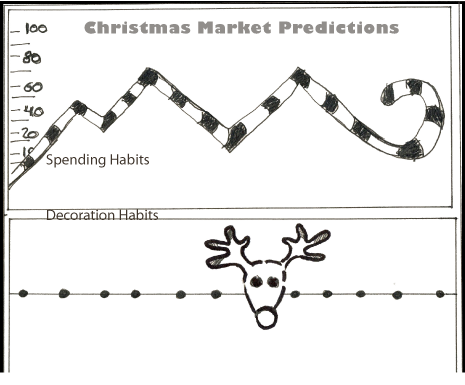With Halloween over, consumers begin to turn their attention (and wallets) to the next annual holiday festivity. However, the standard Christmas discounts will be coming even earlier this year.
Black Friday, the day after Thanksgiving, has traditionally been the start to the Christmas shopping season. Going against tradition, many retailers have begun to offer sales as early as October, causing increased competition. This has led to a wider range of stores offering steeper discounts for a longer sales period. Stores such as Sears and Toys “R” Us commenced Black Friday discounts the weekend of Oct. 29 and Abercrombie & Fitch sent out an email to customers Oct. 24 offering Christmas savings. Christmas products, such as ornaments, wreaths and candy are now being displayed by companies such as Wal-Mart and Target. Even online distributors, such as Amazon.com, began offering markdowns on brand name electronics.
This premature and prolonged Christmas campaign has caused what Michigan State University business professor Bonnie Knutson calls the “blurring of the holidays,” according to the Lansing State Journal.
Many analysts cite the nation’s economic troubles as the reason for the intense marketing initiatives. Last year, Black Friday experienced an 8.6 percent decrease in average spending from 2008, according to the Boston College Observer. The American Research group reports that spending for families also declined since 2008, from $431 to $417.
Despite this slight decrease, the financial situation for buyers looks to be slightly better this year. Nearly 62 percent of consumers are planning to spend the same or more on the holidays, an 11 percent increase since 2009, according to the Deloitte 25th Annual Holiday Survey. Additionally, the
findings report that three-quarters of consumers plan to change the way they shop this holiday season to save money. Thus, retailers have become more strategic and aggressive in their advertising campaigns to ensure their stake in cautious shoppers’ limited budget.
“Retailers think if they’re not putting their stuff out until after Thanksgiving, people may have already spent what little money they have,” Knutson said, according to the Lansing State Journal.
Many people complain about the market’s early release of Christmas-related products and the resulting burnout from months of holiday advertising. However, in the end consumers have only themselves to blame.
Advertisers have begun marketing Christmas items earlier for one simple reason — it works. The National Retail Federation reports that nearly 40 percent of buyers planned to begin their holiday shopping before Halloween and a Consumer Reports poll showed that a quarter of Americans had already started.
The best tool shoppers have against this barrage of advertising is personal accountability — refraining from buying holiday items before Thanksgiving will convince businesses to revert to the old holiday sale standard.
“You don’t have to spend just because you are prompted to,” Sally Palaian, author of “Spent: Break the Buying Obsession and Discover Your True Worth,” said according to Treehugger.com. “You really need to get grounded about the holidays and what is really meaningful to you so you do not get pulled into the stream of media merchandising.”
In the end, all that is required to curb the over-saturation of holiday marketing is for consumers to exercise a little self-control.
